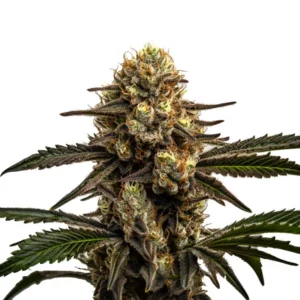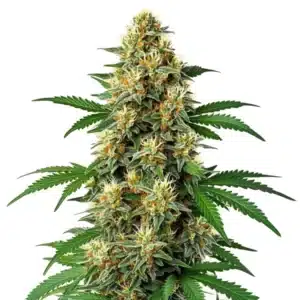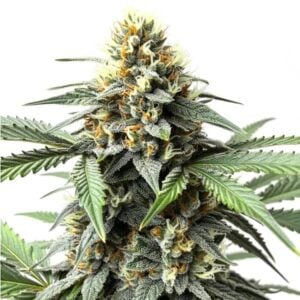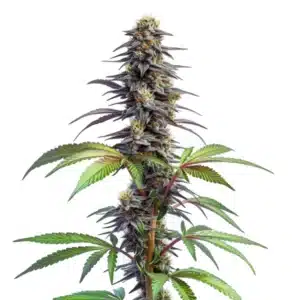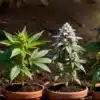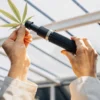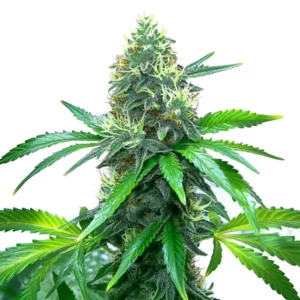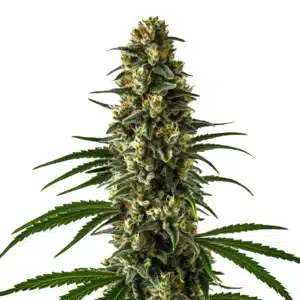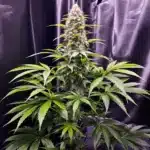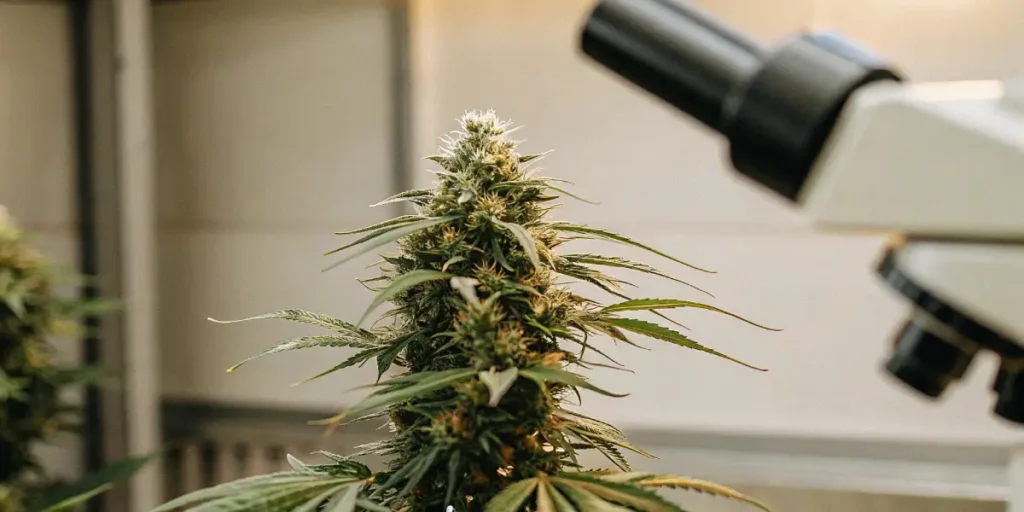
How does Oxidative Stress Affect THC and CBD Quality?
The quality of THC and CBD in cannabis is a major concern for both first-time buyers and seasoned growers. One common question is: How does oxidative stress affect THC and CBD quality? Oxidative stress can significantly impact these cannabinoids. This stress is a chemical reaction that occurs when plants are exposed to more oxygen than they can handle. It can lead to the degradation of THC quality, affecting the potency of the final product.
Oxidative stress doesn’t just affect THC. It also impacts CBD stability. When CBD is exposed to excessive oxidative conditions, it can lose its effectiveness. This stress can alter the chemical structure of cannabinoids, leading to a reduction in their overall quality. Therefore, managing oxidative stress is crucial for preserving the integrity of cannabis plants.
Recommended Strains
Apple Fritter
|
|
THC | 22% - 25% (Medium) |
|
|
Type | Feminized |
|
|
Yield | Medium |
|
|
Phenotype | 60% Indica / 40% Sativa |
Animal Cookies
|
|
THC | 22% - 27% (High) |
|
|
Type | Feminized |
|
|
Yield | High |
|
|
Phenotype | 50% Indica / 50% Sativa |
One way to consider oxidative stress is to think of it like rust on metal. Just as rust can weaken and degrade metal, oxidative stress can degrade cannabinoids. It affects the plant’s ability to produce high-quality THC and CBD. This makes it essential for growers to take steps to minimize oxidative stress during cultivation and storage.
Impact of Oxidative Stress on THC Potency
THC potency is a primary concern for cannabis users looking to maximize their experience. However, oxidative stress can lead to THC quality degradation. This chemical process can cause THC molecules to break down, reducing their effectiveness. The result is a less potent product that may not deliver the desired effects.
For example, when cannabis plants are exposed to too much light or high temperatures, oxidative stress can increase. This stress accelerates the degradation of THC, resulting in a product that does not meet the potency expectations of consumers. Therefore, controlling environmental factors is key to maintaining THC potency.
Besides to light and temperature, the impact of oxidative stress on THC potency is further exacerbated by prolonged exposure to oxygen. This can lead to a chemical reaction that alters the molecular structure of THC, diminishing its effectiveness. Growers must understand the delicate balance required to protect their plants from these conditions, ensuring the highest quality THC is maintained.
The question of “How does oxidative stress affect THC and CBD quality?” is crucial for both cultivation and consumption. Techniques such as using reflective materials in grow rooms to manage light exposure and ensuring proper air circulation can be effective strategies. These measures help in reducing the oxidative stress on the plants, thereby preserving the potency of THC and maintaining the integrity of the product for consumers.
Promos & Deals
Oxidative Stress Effects on CBD Stability
CBD, known for its calming effects, is another cannabinoid that can be affected by oxidative stress. This stress can lead to changes in CBD’s chemical structure, impacting its stability and effectiveness. As a result, users may not experience the full benefits of CBD if it has been compromised by oxidative conditions.
Like THC, CBD is sensitive to environmental factors. Prolonged exposure to air, light, and heat can increase oxidative stress, threatening CBD preservation. This makes it essential for growers to store cannabis properly to maintain CBD quality. Strains such as OG Kush from Blimburn Seeds are bred to withstand harsh conditions, helping to ensure CBD stability.
Knowing the oxidative stress effects on CBD stability is essential for maintaining its therapeutic benefits. The degradation process can lead to a loss of active compounds, which diminishes the efficacy of CBD products. Therefore, reducing oxidative stress through strategic storage and handling is fundamental for preserving the quality of these valuable cannabinoids.
In addressing the question, “How does oxidative stress affect THC and CBD quality?” the focus on CBD involves careful cultivation practices. Ensuring that plants are not subjected to excessive handling and minimizing their exposure to environmental extremes can prevent the degradation of CBD. These practices help maintain the stability and effectiveness of CBD, providing consumers with reliable and high-quality products.
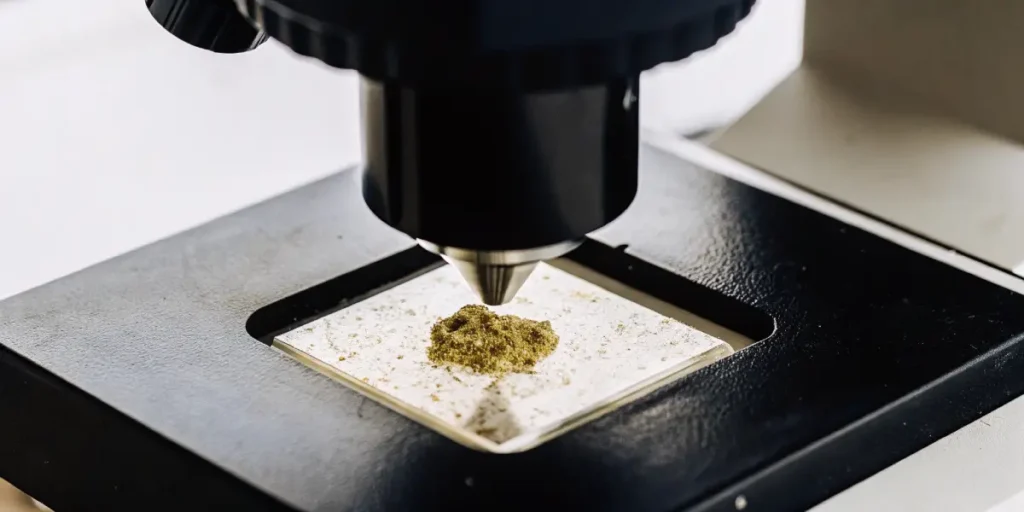
THC Quality Degradation Due to Oxidative Stress
Degradation of THC quality due to oxidative stress can result in a less potent cannabis product. This degradation is often caused by excessive exposure to oxygen and light. Such conditions can lead to a chemical reaction that breaks down THC, reducing its potency and effectiveness.
To mitigate this effect, growers often employ strategies that limit the exposure of cannabis to these elements. Techniques such as using blackout shades in grow rooms or storing harvested plants in dark, cool environments are common practices. This helps preserve THC quality and ensures a more potent product.
THC quality degradation due to oxidative stress is a concern for both producers and consumers who seek consistent potency in their cannabis products. Protecting THC from oxidative damage involves meticulous planning and execution during the growth and storage phases. By maintaining controlled environments, growers can substantially reduce the risk of THC degradation.
Addressing “How does oxidative stress affect THC and CBD quality?” requires a comprehensive knowing of environmental influences. Integrating measures such as humidity control and the use of UV-blocking films can further safeguard against oxidative stress. These proactive steps help in delivering a product that meets the high expectations of its users, retaining the intended potency and effects.
CBD Preservation Under Oxidative Stress Conditions
Preserving CBD under oxidative stress conditions is crucial for maintaining its therapeutic benefits. Oxidative stress can lead to the breakdown of CBD, rendering it less effective. Therefore, growers and consumers alike must take steps to protect CBD from these harmful conditions.
Effective preservation techniques include minimizing exposure to air and light. Using vacuum-sealed containers and storing cannabis in a dark, cool place can significantly reduce oxidative stress. These methods ensure that CBD retains its quality and effectiveness over time.
CBD preservation under oxidative stress conditions is vital for ensuring the longevity and efficacy of CBD products. By employing advanced storage solutions such as nitrogen flushing and UV-resistant packaging, the negative impact of oxidative stress can be minimized. These efforts contribute to maintaining the therapeutic value of CBD.
The query “How does oxidative stress affect THC and CBD quality?” highlights the importance of safeguarding cannabinoids through effective preservation strategies. By adopting best practices in cultivation and storage, the integrity of CBD can be upheld. This approach ensures that consumers receive the full spectrum of benefits offered by high-quality CBD products, free from oxidative degradation.
Oxidative Stress Influence on Cannabinoid Effectiveness
The overall effectiveness of cannabinoids like THC and CBD is largely influenced by oxidative stress. This stress can alter the chemical composition of these compounds, reducing their ability to provide the desired effects. As such, managing oxidative stress is vital for ensuring cannabinoid effectiveness.
Growers can influence cannabinoid effectiveness by controlling environmental factors. This includes regulating temperature, humidity, and light exposure. By maintaining optimal growing conditions, the impact of oxidative stress on THC and CBD can be minimized, resulting in a more effective product.
The oxidative stress influence on cannabinoid effectiveness is a critical factor for growers aiming to achieve superior quality in their products. By knowing the dynamics of oxidative stress, growers can implement tailored strategies to protect their crops. This ensures that the cannabinoids retain their intended effects and provide a satisfying experience for users.
When considering “How does oxidative stress affect THC and CBD quality?” it becomes evident that proactive measures are necessary to mitigate its effects. Employing cutting-edge technology in environmental monitoring and control can lead to significant improvements in cannabinoid effectiveness. These innovations help maintain the potency and therapeutic qualities of cannabis, ensuring a reliable product for consumers.
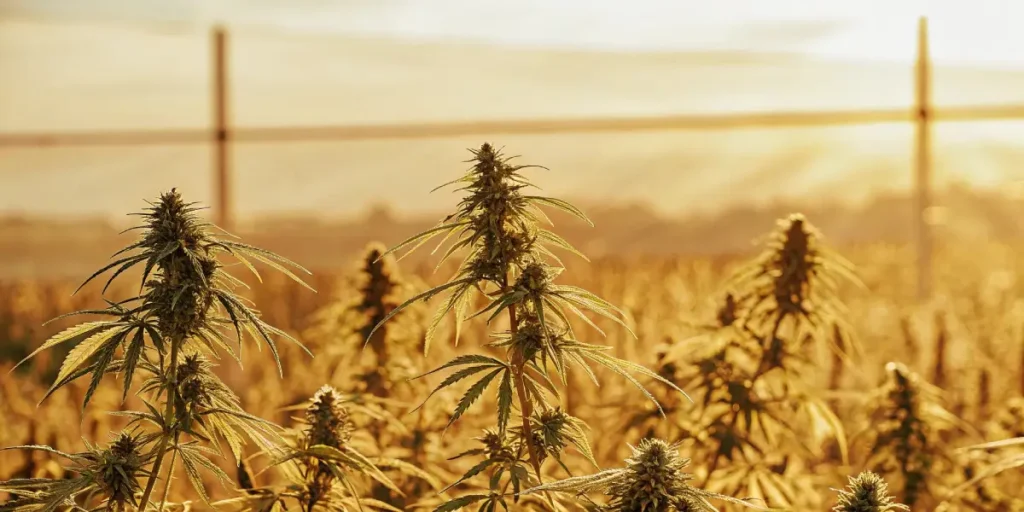
FAQs on How does oxidative stress affect THC and CBD quality?
What is oxidative stress?
Oxidative stress is a chemical reaction that occurs when there’s an imbalance between free radicals and antioxidants in the body or plant. In cannabis, it can be caused by excessive exposure to oxygen, light, or heat. This stress can lead to the degradation of cannabinoids like THC and CBD, affecting their quality and effectiveness.
To combat oxidative stress, it’s important to control environmental factors during cultivation and storage. By minimizing exposure to harmful elements, the integrity of THC and CBD can be better preserved. This ensures that users receive a high-quality product that meets their expectations.
Knowing oxidative stress is essential for recognizing how it can compromise the quality of cannabis products. This stress can accelerate the degradation process, leading to a loss of potency and effectiveness in THC and CBD. By addressing oxidative stress, growers can maintain the desired quality and ensure a product that satisfies consumer expectations.
The question “How does oxidative stress affect THC and CBD quality?” underscores the need for comprehensive strategies in cannabis cultivation and storage. By focusing on reducing oxidative stress, growers can enhance the resilience of their plants, preserving the valuable compounds within. This approach secures the long-term success of their products in the market.
How does oxidative stress affect THC and CBD quality?
Oxidative stress affects THC and CBD quality by causing these cannabinoids to degrade. This stress can alter their chemical structure, reducing their potency and effectiveness. As a result, cannabis products may not deliver the desired effects, disappointing both new buyers and experienced users.
To ensure high-quality THC and CBD, it’s important to manage oxidative stress through proper growing and storage techniques. This includes controlling light exposure, maintaining optimal temperature and humidity levels, and using airtight containers for storage.
Knowing how oxidative stress affects THC and CBD quality is key for maintaining the integrity of cannabis products. By recognizing the environmental factors that contribute to oxidative stress, growers can implement preventative measures. This ensures that the final product retains its intended potency and therapeutic benefits.
Proactively addressing oxidative stress can lead to substantial improvements in cannabinoid quality. By employing strategies such as environmental monitoring and stress-resistant strains, the impact of oxidative stress can be minimized. This results in a more reliable and effective product that meets the expectations of consumers.
Can some cannabis strains resist oxidative stress better than others?
Yes, some cannabis strains are more resistant to oxidative stress than others. These strains are often bred for their resilience against harsh environmental conditions. By choosing robust strains, growers can minimize the impact of oxidative stress on THC and CBD quality.
Strains like Blue Dream, OG Kush, and Girl Scout Cookies from Blimburn Seeds are known for their ability to withstand oxidative stress. These strains maintain their potency and effectiveness, ensuring a high-quality product for consumers.
Choosing cannabis strains with inherent resistance to oxidative stress is a strategic decision for growers aiming to preserve cannabinoid quality. These strains have been specifically developed to withstand environmental challenges, ensuring consistent potency and effectiveness. By selecting such strains, growers can enhance the resilience of their crops.
The inquiry “How does oxidative stress affect THC and CBD quality?” points to the importance of strain selection in cultivation. By prioritizing strains with natural resistance, growers can mitigate the negative effects of oxidative stress. This results in a more robust product that maintains its quality under various conditions.
What are the best practices for storing cannabis to reduce oxidative stress?
To reduce oxidative stress during storage, it’s important to minimize exposure to air, light, and heat. Using airtight containers and storing cannabis in a dark, cool place can significantly reduce the impact of oxidative stress, preserving THC and CBD quality.
Proper storage techniques ensure that cannabis retains its potency and effectiveness over time. By implementing these practices, both growers and consumers can enjoy a high-quality product that meets their expectations.
Implementing best practices for cannabis storage is essential for minimizing oxidative stress. By focusing on controlled environments and protective packaging, the degradation of THC and CBD can be effectively managed. These practices play a crucial role in maintaining the quality and longevity of cannabis products.
Addressing the question “How does oxidative stress affect THC and CBD quality?” involves a commitment to superior storage techniques. By adopting innovations such as humidity packs and light-resistant storage solutions, the adverse effects of oxidative stress can be mitigated. This ensures that cannabis products retain their intended potency and therapeutic benefits.
How can growers minimize the impact of oxidative stress during cultivation?
Growers can minimize the impact of oxidative stress during cultivation by controlling environmental factors. This includes regulating light exposure, maintaining optimal temperature and humidity levels, and providing adequate ventilation for plants.
By creating an ideal growing environment, the effects of oxidative stress on THC and CBD quality can be reduced. This results in a more potent and effective product, satisfying the needs of both first-time buyers and experienced cannabis users.
Minimizing the impact of oxidative stress during cultivation is a multifaceted challenge that requires careful planning and execution. By implementing strategies such as stress-resistant strains and optimized grow environments, growers can significantly mitigate oxidative damage. This approach ensures the production of high-quality cannabis with consistent cannabinoid potency.
In response to “How does oxidative stress affect THC and CBD quality?” growers can benefit from integrated pest management and precision agriculture techniques. These methods enhance the resilience of cannabis plants against environmental stressors, preserving cannabinoid quality. By adopting such practices, growers can secure a competitive advantage in the market by offering superior products.


